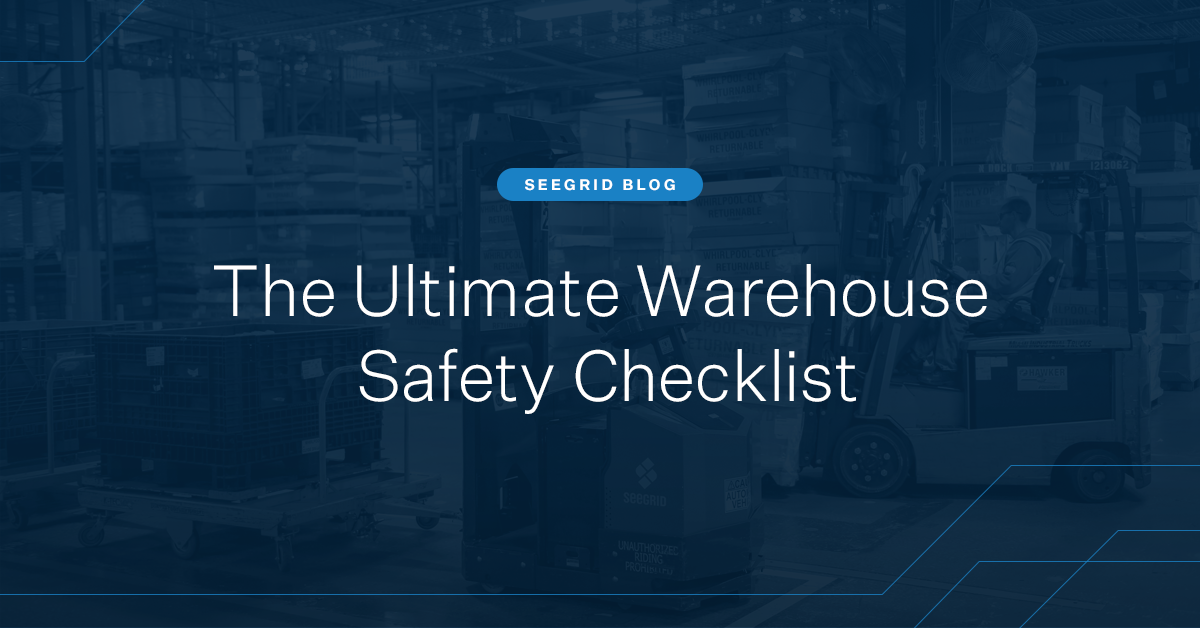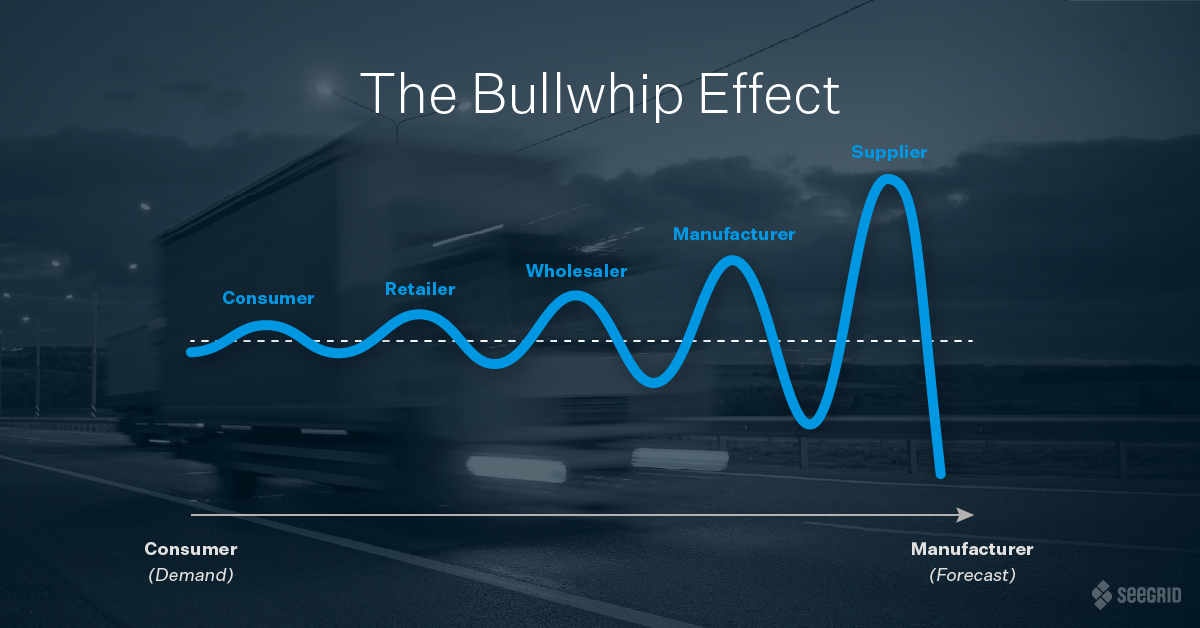Productivity and profitability pale in comparison to the importance of safety in a warehouse setting. There aren’t many professions where workers put their health on the line when they punch in, but warehousing can be an incredibly dangerous industry.
Nearly 95 million people miss work each year due to a workplace injury, and warehousing tops the list as the main contributor to those injuries. Warehouses can be chaotic with high traffic volumes, heavy machinery, and often tight time crunches and lofty efficiency quotas.
Check out this definitive warehouse safety checklist to make sure you’re doing everything to ensure the safety of your workers.
Why Warehouse Safety Is Important
A warehouse manager’s number one priority is worker safety. Each safety regulation warehouse managers put in place protects the health, and in many cases, the lives of their workers. While OSHA standards and scheduled inspections are mandatory, it’s important that management takes a proactive and exhaustive approach to safety. Management not only needs to have the pulse on movement patterns but also on employee satisfaction and emotional well-being.
For some jobs, the slightest lapse in concentration can cause a chain reaction of hazardous events. Heavy equipment accidents are responsible for a large portion of warehouse accidents. For example, if your manual forklift hasn’t been involved in a workplace accident yet, it’s only a matter of time before it is. Ninety percent of manual forklifts are involved in at least one injury or fatality during their service life.
Address Loading Dock and Battery Charging Station Hazards
The loading dock and battery charging stations are especially dangerous areas in any warehouse. This is typically where there is the highest combination of foot and heavy machinery traffic. Manual equipment operators feel a lot of pressure to enter and exit these areas quickly to not hold up the queue.
Automation makes loading docks and battery charging stations safer. Autonomous mobile robots (AMRs) maintain safe driving speeds and never transport more than they can carry, thus eliminating the risk of tipping over. Automating forklift battery charging means that humans can keep their distance from potential hazards, including electrocution and explosion threats characteristic of lead-acid batteries. Additionally, automation greatly reduces traffic. AMRs can be programmed to move in precise patterns, so that they’re always working seamlessly and never waiting in line. This precision and reliability boosts productivity and cost-efficiency.
Perform Regular Ergonomic Assessments
According to OSHA, warehousing employees are among the most susceptible professionals to musculoskeletal disorders (MSDs) due to the physical demands of their jobs. Regular ergonomic assessments and education are key to every warehouse safety checklist. Safety officers should teach employees the proper posture for each of their assigned tasks and alert them to the early signs of MSDs.
Warehouse managers must create an open workplace culture that encourages employees to report the first signs of discomfort. Employees should be aware that if their job is causing them pain, there are other positions within the company that may be more forgiving to their bodies, especially if the company deploys AMRs to take on the most repetitive, mundane, and ergonomically challenging tasks.
Create More Rewarding Jobs
Tow truck, pallet truck, and forklift operators have tough jobs. Driving requires their undivided attention for hours on end, and often tasks are monotonous and physically uncomfortable. Day in and day out, the physical and mental exhaustion can take a toll and lead to burnout. From there, burnout and the resulting employee turnover begins a cycle of a too-small staff of overworked employees who may feel the need to cut corners to keep up with demand.
Poll each warehouse worker regularly to gauge their satisfaction with their current job and ask them if they’d like to move elsewhere in the organization before burnout sets up. There is a fearful misconception that automation takes jobs away from humans. In fact, automation creates jobs. These jobs are rewarding, challenging, and stimulating.
If you invest in automation from Seegrid, comprehensive training about the technology is offered through a full-service educational experience called Seegrid Learning. In addition to on-site training, classroom-style educational courses, and live virtual training, Seegrid customers also have 24x7 access to a robust online training portal that contains on-demand courses, materials, and resources to empower facility employees to safely interact with the technology and use it to its full potential.
The Sign It's Time to Invest in AMRs
There are several signs that should prompt warehouse managers to think about investing in AMR automation to improve warehouse operation and safety.
1. Demand is outstripping current capabilities. Humans can only work so fast. Actually, they shouldn’t work too fast, because that’s often when errors and workplace accidents occur. AMRs are consistent, reliable, and predictable. At the end of the day, you can count on an AMR fleet to complete a certain amount of work and to complete it without incident.
2. Peak seasons fill you with dread. Do you have enough staff to fulfill your peak season quotas? Are you finding that more and more, every day seems like peak season? There is a labor shortage in the United States, which complicates quickly backfilling open positions and hiring extra hands for busy times. Plus, the e-commerce boom and promises for nearly immediate shipping strain material handling facilities. Automating tasks that can be performed as well as, if not better than humans, is a great way to solve staff shortages.
3. Human errors are affecting safety. Warehouse managers must remember that their workers are humans. They may be overworked, or they may be unfulfilled by their current job, and their minds may wander while on the clock. The solution to an uptick in human error may be to offer a more stimulating job elsewhere within the organization. For example, AMR fleet analytics software requires humans to monitor operations and implement improvements based on the software’s findings. Positions like this create new career growth and skill-building opportunities for long-term job satisfaction.
Seegrid is a pioneer in proven and intelligent automation solutions. Seegrid Palion AMRs see in 3D, which is crucial to safely navigating dynamic environments. Fusing Seegrid’s unique computer vision system with real-time sensor data, proprietary algorithms create a fully autonomous robotic fleet with an unmatched ability to see, understand, and learn. To date, Seegrid Palion AMRs have traveled millions of miles without a single personnel accident.
Improve Your Warehouse Safety Today
As you embark on new safety measures or optimize outdated practices, keep this warehouse safety checklist handy to guide your efforts and consider adding Palion AMRs to your facility. Apply for a facility scope to learn more about automation solutions that result in a safer warehouse.
Infographic: Driving Forklift Safety with AMRs
Download this infographic to learn how manufacturers, warehouses, and logistics facilities are leveraging automation to improve employee safety and well-being.







